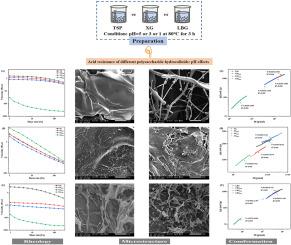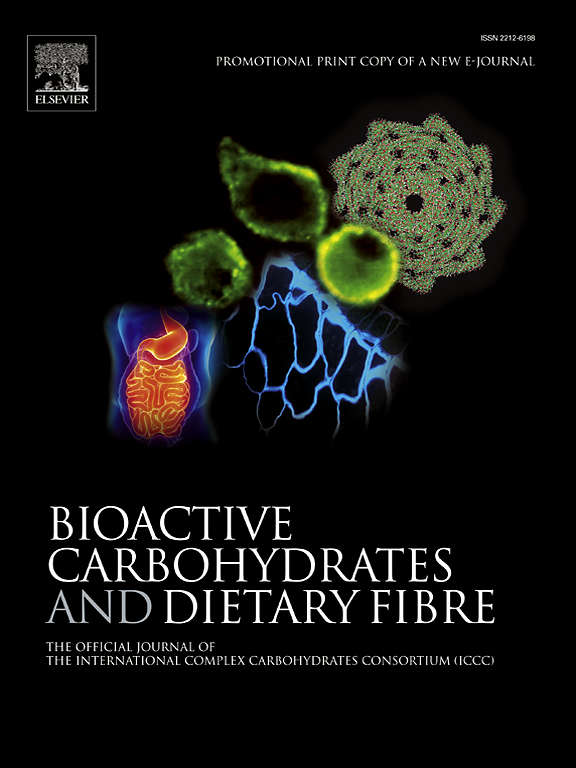Acid resistance of different polysaccharide hydrocolloids: pH effects
IF 3.6
引用次数: 0
Abstract
The acid resistance of polysaccharide hydrocolloids is very important for its application in food industry. In this study, the acid resistance of tamarind seed polysaccharide (TSP), xanthan gum (XG), and locust bean gum (LBG) at different pH was investigated. Results showed that the shear viscosity of TSP and LBG was significantly decreased at pH 1. Structural analyses showed that molecular degradation on the side chain of TSP and LBG occurred at pH 1, whereas the composition of the monosaccharides of XG showed no significant difference. Molecular degradation led to a decrease in the molecular weight of TSP and LBG with the gradual decrease of pH, accompanied by a shift in solution conformation, i.e., from semi-flexible chain to rigid rod for TSP and LBG, whereas XG did not undergo significant structural changes with the gradual decrease of pH. In addition, the SEM results showed that with the gradual decrease of molecular weight, the structures of TSP and LBG were gradually broken and showed fragmentation, while XG only showed slight cracks. These results show that the structure of the polysaccharides changes with the gradual decrease of pH, resulting in a change in the solution conformation and a decrease in viscosity. This study provides a new theoretical basis for the application of these polysaccharide hydrocolloids in food processing.

不同多糖水胶体的耐酸性:pH 值的影响
多糖类水胶体的耐酸性对其在食品工业中的应用非常重要。本研究考察了罗望子多糖(TSP)、黄原胶(XG)和槐豆胶(LBG)在不同 pH 值下的耐酸性。结果表明,在pH值为1时,TSP和LBG的剪切粘度明显降低;结构分析表明,在pH值为1时,TSP和LBG的侧链发生了分子降解,而XG的单糖组成无明显差异。分子降解导致 TSP 和 LBG 的分子量随着 pH 值的逐渐降低而降低,同时伴随着溶液构象的转变,即 TSP 和 LBG 从半柔性链转变为刚性杆,而 XG 则没有随着 pH 值的逐渐降低而发生明显的结构变化。此外,扫描电镜结果表明,随着分子量的逐渐降低,TSP 和 LBG 的结构逐渐断裂并出现碎片,而 XG 仅出现轻微裂纹。这些结果表明,多糖的结构会随着 pH 值的逐渐降低而发生变化,从而导致溶液构象的改变和粘度的降低。这项研究为这些多糖水胶体在食品加工中的应用提供了新的理论依据。
本文章由计算机程序翻译,如有差异,请以英文原文为准。
求助全文
约1分钟内获得全文
求助全文
来源期刊

Bioactive Carbohydrates and Dietary Fibre
Agricultural and Biological Sciences-Food Science
CiteScore
6.00
自引率
0.00%
发文量
38
期刊介绍:
文献相关原料
公司名称
产品信息
上海源叶
NaNO3
 求助内容:
求助内容: 应助结果提醒方式:
应助结果提醒方式:


